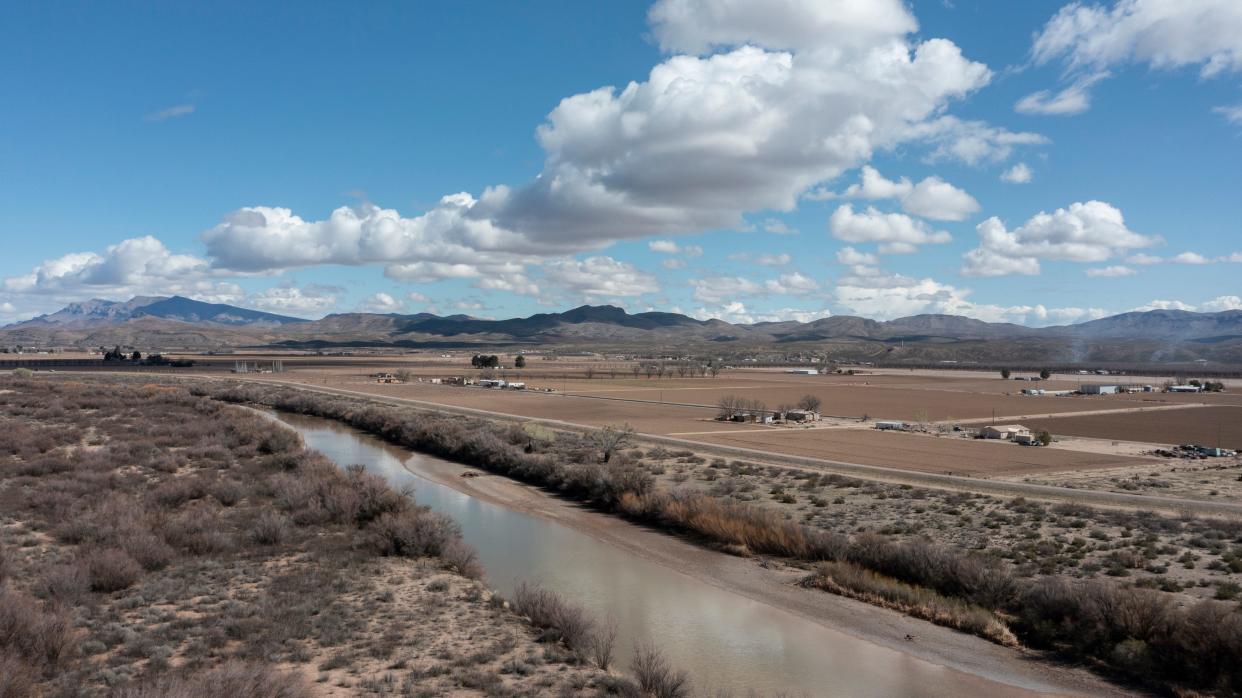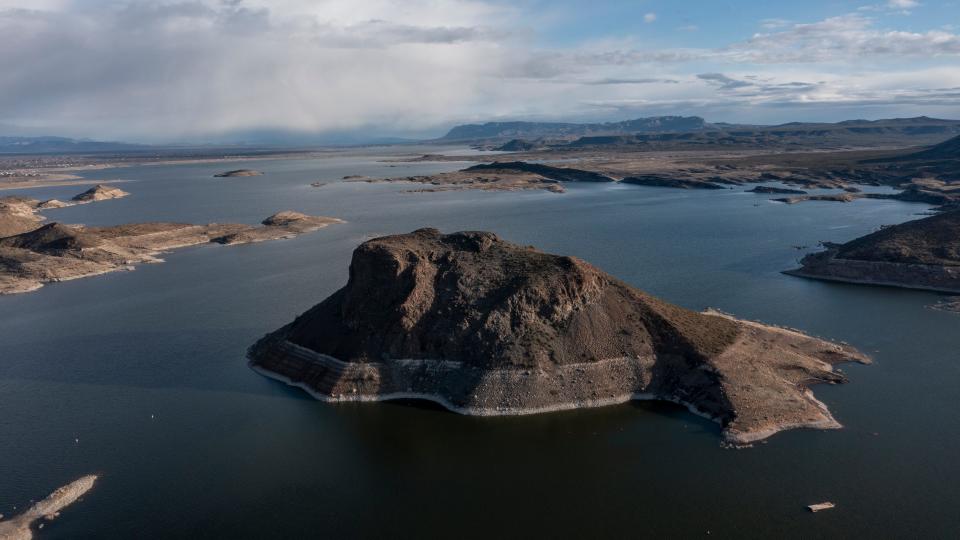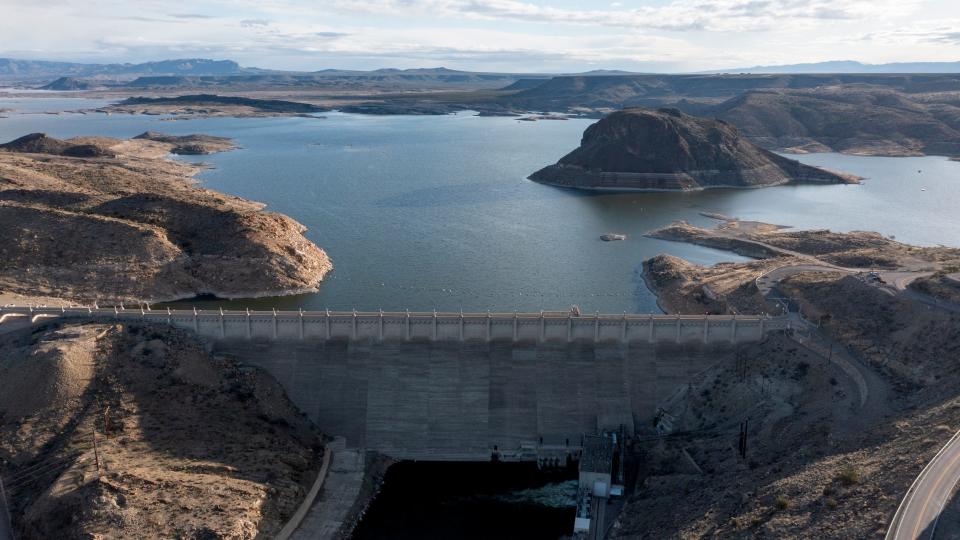Water begins flowing from Elephant Butte to El Paso in earliest release since 2018

From a trickle to a flow and eventually a deluge, water is flowing early from Elephant Butte into the Rio Grande for the first time since 2018.
With more water in storage at Elephant Butte, releases began there on Feb. 15 and continued at Caballo Dam on March 8, sending much-needed relief to farmers and residents across southern New Mexico, West Texas and Mexico.
While water is released through the dams regularly to quench dry farmland, Matthew Narvaez, irrigation systems director at the Elephant Butte Irrigation District, said the early release this year is thanks to a late runoff last year that led to extra water in the lake.
"The river doesn't run continuously," he said, "it's all driven off demand. I think the last time we started this early was in 2018. Last year, we started around May 1, so this is definitely a change."

High need in the El Paso area drove the early release this year, he said, and farmers will undoubtedly be relieved to see water again flowing to their parched farmlands.
Narvaez said the release that kicked off March 8 began at 500 cubic-feet-per-second and, over an hour or so, eventually ramped up to 2,200 cubic-feet-per-second, the equivalent of more than 16,400 gallons.
However, the stored water that led to an early release this year is not necessarily a good sign — the Bureau of Reclamation stated in a news release that "water managers are expecting a low spring runoff this year on the Rio Grande ..."
"While we don't yet know what runoff will look like, we will continue to work closely with the irrigation districts, states, municipalities, Pueblos and all other stakeholders to release water for multiple purposes where possible as this megadrought continues," said Albuquerque Area Manager Jennifer Faler in the release. "A successful irrigation season and river and ecosystem health are important to all of us, and we use every tool in our toolbox to get the most benefit from New Mexico's variable water supply."
'A full season with a full allocation'
It took a few days for the water released to make its way to El Paso, where 69,000 acres are awaiting its arrival, said El Paso Water Improvement District 1 Manager Jay Ornelas.
"We're excited, the city's excited," he said. "It's on its way."
"This year, farmers and our constituents are very ecstatic with the fact that we released in March, as opposed to previous years," Ornelas continued. "Due to the drought, we've released typically in June and had shorter seasons. (This year) we're going to have a full season with a full allocation."

Operations are running at full steam for the Water Improvement District, which switched from maintenance to operations last week in anticipation of the early release.
More than 35,000 customers have already ordered water, Ornelas said, and the 32,000 small-tract customers, those with two acres or less, are expected to begin irrigating in April.
And while last year's snow is this year's water, Ornelas said this year's snow is lagging.
"But we've got a few months," he said, "so we're hoping (last year's) trend continues and the incline and curve keep going upward through April and the snow melt will begin in May."
Though the Water Improvement District utilizes other water to supplement the runoff, such as roughly 60 wells and some affluent release from the water treatment plant, Ornelas said the river remains the primary water source.
"The water quality is nowhere near the quality of the river and the runoff from Elephant Butte," Ornelas said. "We, as a district, can only allocate what we have in storage at Elephant Butte, so that controls the whole allocation and what the district is set to deliver."
'Is this the new normal?'
It's not just Borderland farms and ranches that will be quenched by the water now inching toward El Paso, which by Monday morning had already reached the Upper Valley — thousands of El Paso Water customers will also be receiving water thanks to the recent release from Elephant Butte.
"We're expecting a full river allocation, which means we get the water earlier in the season than we have been," said Scott Reinert, Water Resource Manager for El Paso Water. "That alone means more water."

Reinert said El Paso can expect 30 weeks of irrigation water, whereas in years past, it's been as few as six weeks. That amounts to 60,000 acre-feet of water from the river, or about half of the 40 billion gallons El Paso Water uses each year.
"What getting the river early does for us is it lets us know during the peak demand of the summer ... we will have an abundance of water to meet those demands," Reinert said, noting that peak water use occurs around the third week of June when El Pasoans are consuming about 165 million gallons a day.
Unlike the Water Improvement District, El Paso Water can tap into groundwater, but Reinert said, "it's a smoother system when we have river water available."
More: 3 beautiful hikes to try this spring in El Paso’s Franklin Mountains
Still, Reinert said water watchers constantly ask, "is this the new normal?" With drought conditions ebbing and flowing across the Borderland, Reinert said it's never certain how much water will be available.
"Your snapshot is through this season," he said. "We've been living season to season. Once we use up this year's water, we'll have to see where we're at for next year."
Reinert recalled how in the late-1980s and into the 1990s, there was a full river supply available for nearly 15 years. But by the start of the 2000s, the availability of enough water had "become almost an annual question."
"Like I always say, our next drought is right around the corner," Reinert said. "We never really know, but this season looks promising for the farmers and the residents."
This article originally appeared on El Paso Times: El Paso farmers, residents to see early rush of water from Elephant Butte

